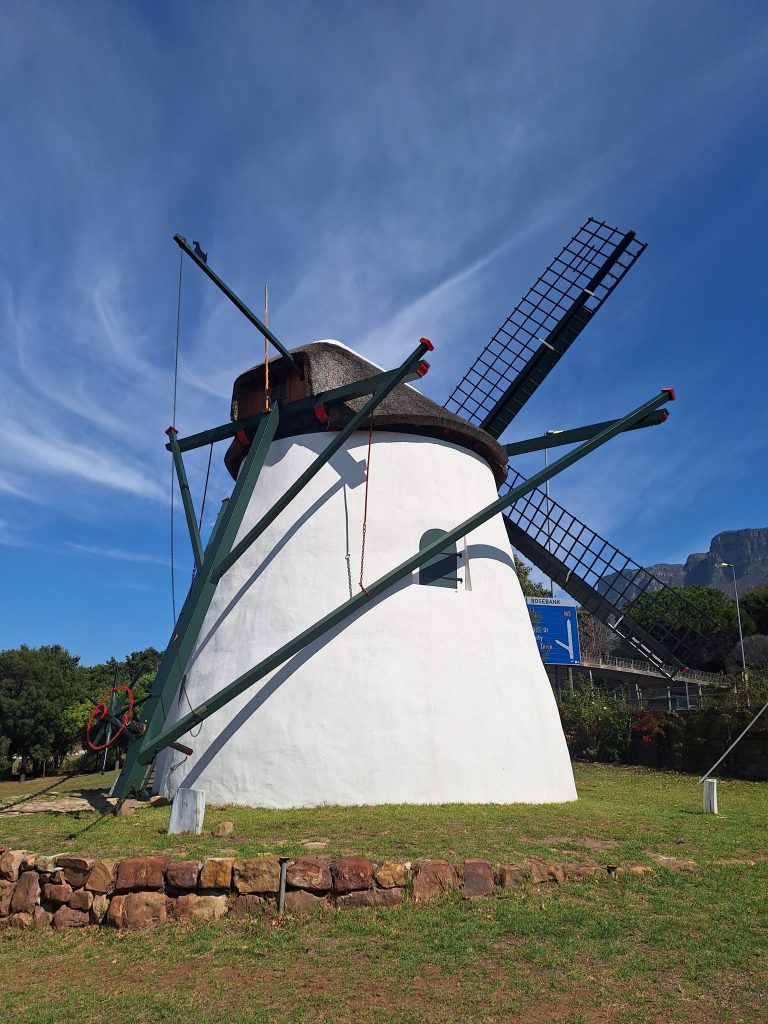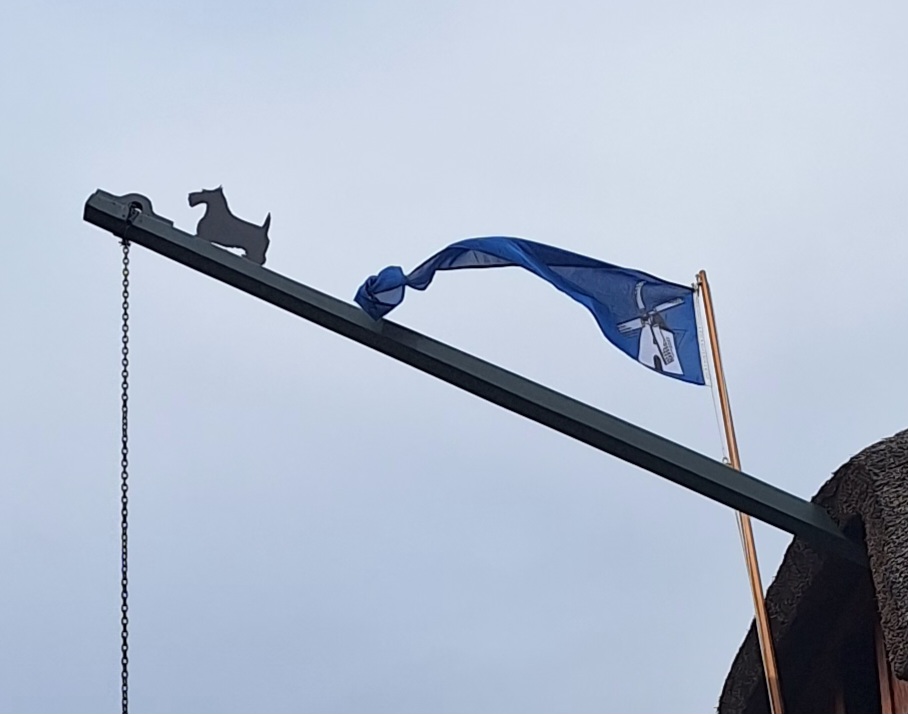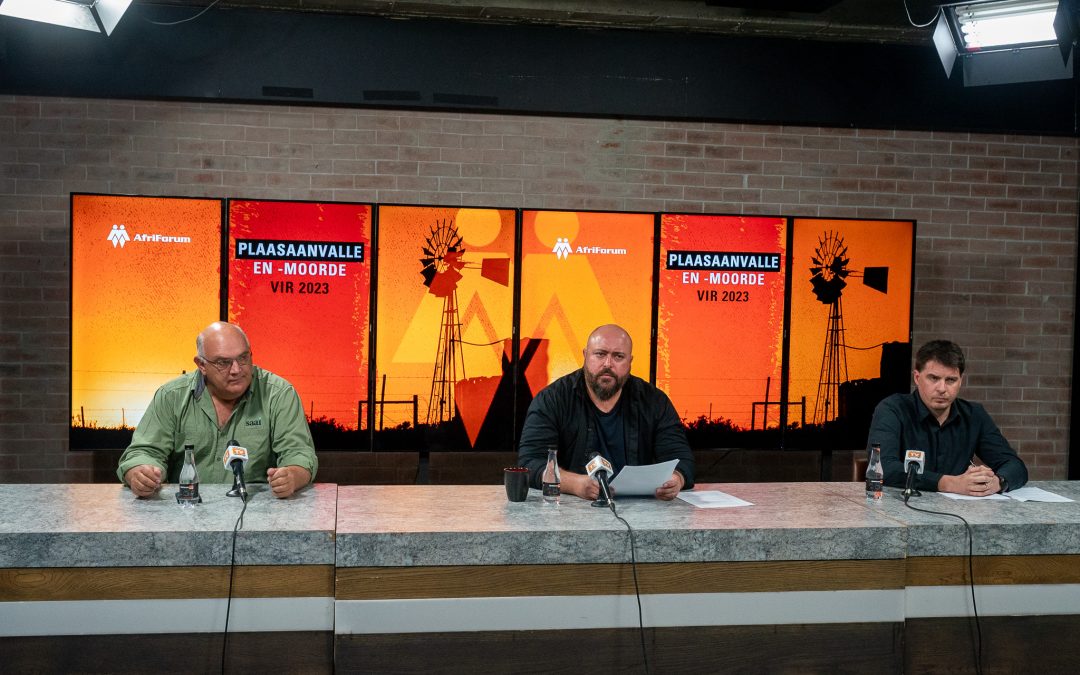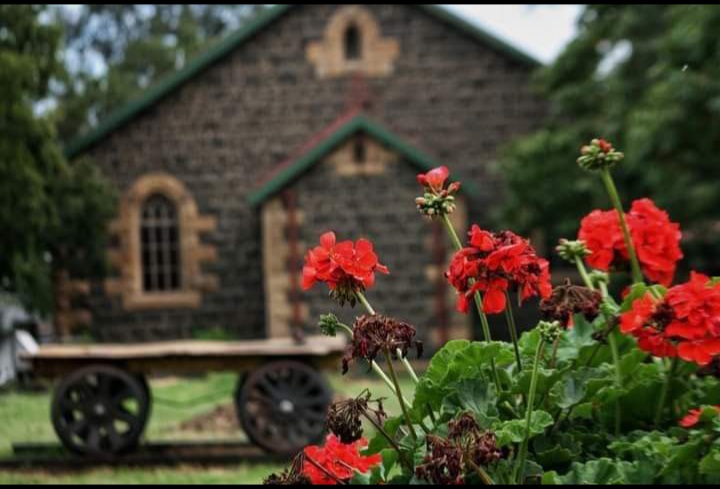Alana Bailey
Heritage Highlights is a new series in which AfriForum focuses on heritage landmarks in the country where communities step in themselves to preserve our unique cultural and historical legacy.
There are many negative reports about heritage – just think of the national parliament building which has still not been restored after the fire of 2 January 2022, as well as many sites that speak of neglect and vandalism.
Fortunately, this is not the sum total of what is happening to heritage in South Africa. There are countless sites where dedicated staff, volunteers and community members join hands and perform miracles to preserve, impart knowledge and offer unique experiences to tourists.
Hopefully, this series will serve to not only make people aware of places that are worth a visit, but also inspire them to get involved at a heritage landmark or site themselves. It is an enriching experience from which one can learn a lot, which can bring satisfaction because you are making a tangible difference, and best of all, can help you make new friends. Sometimes these friendships can even extend across national borders, as our first heritage highlight proves.
This first instalment focuses on Mostert’s Mill in Cape Town, which has literally risen from the ashes! It was officially reopened on 20 April 2024 – exactly three years after it was practically destroyed by a runaway veldfire.
We are talking to John Hammer, Chairman of Friends of Mostert’s Mill, the volunteer organisation we have to thank for this remarkable story of restoration and reopening.
Alana: Thank you for being willing to talk to us about your relationship with the mill and your adventures of the past three years, John. My first question on behalf of people who are not familiar with the mill, when was it built?
John: In about 1796, the small wind-powered Mostert’s Mill was erected on Welgelegen, the farm of Gysbert van Reenen, as a small farm mill to cater for his individual needs.
Alana: When was the Friends organisation founded and what is its purpose?
John: The Friends of Mostert’s Mill was founded at a meeting in Mowbray Town Hall in 1993. It was an offshoot of the Vernacular Architectural Society, three of whose members had the vision of restoring Mostert’s Mill back into working order. The Friends aims are to keep the mill maintained and running as the last remaining working windmill in Africa; to allow members of the public who share our aims to join as members and come and witness a 220-year-old windmill grinding wheat into whole meal using the power of the wind; and to train a younger generation of millers and volunteers to ensure the continued preservation of the mill.
Alana: This brings me to the tragic events of 18 April 2021. How did it come about that the mill was so badly damaged in the fire?
John: A small fire started on the lower northern slopes of Devil’s Peak early on Sunday morning of 18 April. This soon spread and was carried by a westerly wind to some trees on the west side of the M3 freeway. An ember from there flew across the highway and landed in the thatch of the mill. This quickly caught light and within six hours the entire interior machinery of the mill (all made of wood) was a pile of embers and ash. All that remained were the blacksmith’s ironmongery, some of it from when the mill was built in 1796 and the sails, which had crashed to the ground on the outside.
Alana: You practically started the restoration process while the ruins were still smouldering. Please tell us briefly about the highs and lows of the past three years.
John: The day after the fire, I was salvaging the ironmongery from the ashes, while reassuring people standing at the gate looking at the burnt-out mill that the Phoenix would rise from the ashes. I got in touch with John Wilson-Harris of Fagan’s Architects (who had been involved with the 1995 restoration of the mill) and Andy Selfe (who had helped me with doing millwrighting work on the mill prior to the fire). John Wilson-Harris was put in charge of the restoration of the masonry tower. Andy Selfe was put in charge of the remaking of the machinery. Our treasurer, Clive Thorpe, pointed out to me that we would need to control the financing of the project and he would volunteer to do that. So together with me in my capacity as the Chairman of the Friends for the past 8 years, we formed a restoration team of four. We immediately set about raising funds (no help was offered by corporates or the government, either national, provincial or local). Crowdfunding was started in Europe. We raised over R200 000 locally and €5 500 in Europe. The Rupert family stepped in and offered to fund the larger portion of the R3.5 million budget. The entire job had no low points. Everyone who worked on the mill, whether volunteers or paid craftsmen, did so with a willing heart for the love of the mill: so truly a “People’s Mill”. Lifelong friendships were made in the process.
Alana: You mentioned an interesting fact about the role of the Internet in your restoration process. Tell us a bit more about it, please.
John: Almost the entire project was very much helped by WhatsApp, emails, YouTube and blogs. WhatsApp messages were sent back and forth between Andy and the various craftsmen making the component parts of the machinery. All the agreements to continue certain stages were done by email between the four members of the restoration team and all the issuing and paying of deposits and final amounts to the various craftsmen by the office of the Historiese Huise Stigting of the Rupert family. The brake wheel and lantern pinion were manufactured on the basis of a YouTube video that some Dutch millwrights had recorded of them doing the same. Andy Selfe kept lots of followers informed by his regular Facebook posts and a detailed blog of the whole restoration process.
Alana: How many kinds of wood did you end up using to restore the mill to its former glory?
John: There are 25 different kinds of wood that were used in the restoration of the machinery. Andy has made a board with pieces of all 25, which will be hung in the mill.
Alana: Congratulations on the award you received from the City of Cape Town. It is a well-deserved honour.
John: We were invited by the Mayor’s office to attend a function for the awarding of civic honours at the City’s Council Chambers on 6 December 2023. There were many other awards handed out on the day. The four members of the restoration team were recognized for Community Service by the Mayor, who thanked us personally afterwards.
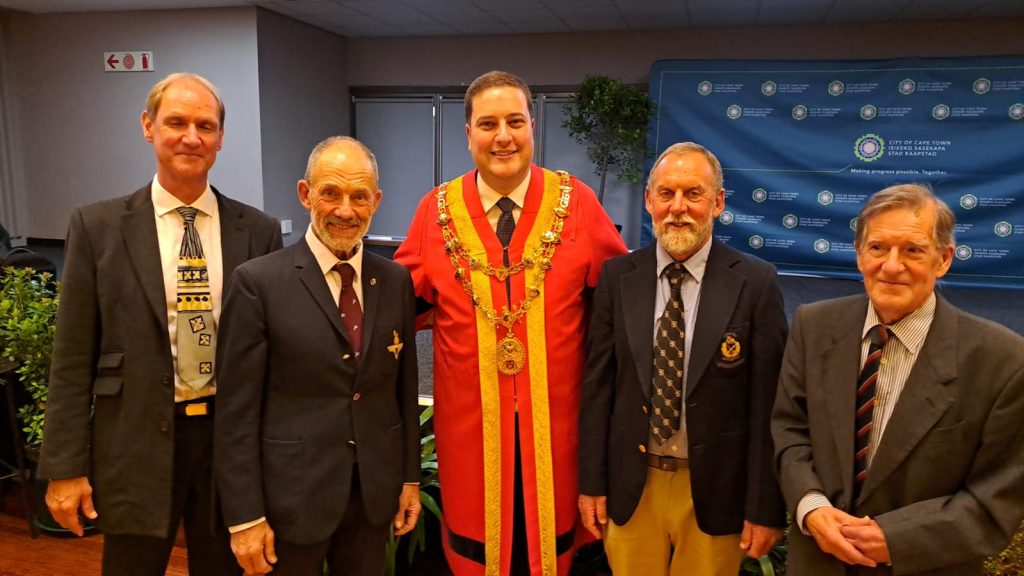
Alana: The official reopening of the mill took place on Saturday 20 April 2024. Does this mean that the mill is fully operational once more?
John: Yes. The mill will be open to members of the Friends on a once-a-month basis, as was the case before the fire. You can visit our website, mostertsmill.co.za, to see how to join as a member, or come to the gate on an open day, and you can be signed up. We propose to open on the third Saturday of every month, weather permitting and if there are enough millers and volunteers available to operate the mill safely.
Alana: What is the meaning of the Scottish terrier that we see on the mill?
John: Before the fire there was a rooster on the end of the brake pole. This was the symbol of Dunning-Bremer, the Dutch millwrighting firm that repaired the mill in 1995. They did nothing to help the present restoration, so it was decided to replace the rooster with a Scottie, as I have had a Scottie at my heels since becoming a miller in 1995: first there was Hamish, then Maggie, followed by Angus and now Jamie, who was born 3 weeks after the fire.
Alana: Do you have any advice for anyone who wants to adopt a heritage landmark or site as you have done?
John: It is no use waiting for “them” to do something. Rather let “us” do something. Form a group of volunteers and get busy. It is a very personally satisfying thing to do. Always do the work with a willing heart and never with a sense of resentment or entitlement.
Alana: And finally, how can people get involved to ensure the future preservation of Mostert’s Mill?
John: By joining the Friends of Mostert’s Mill and offering to volunteer on open days or when maintenance needs to be done.
Alana: Thank you so much John and your team, for the fantastic work you have done and are still doing to ensure that this unique and beloved heritage landmark will keep on turning for years to come. AfriForum will continue making donations whenever possible. We encourage members of the public to do the same and to read more about the mill, your acitivities and the restoration process at mostertsmill.co.za.
Photo: Friends of Mosterts Mill Facebook



